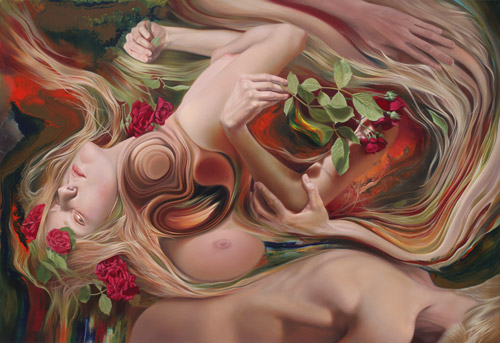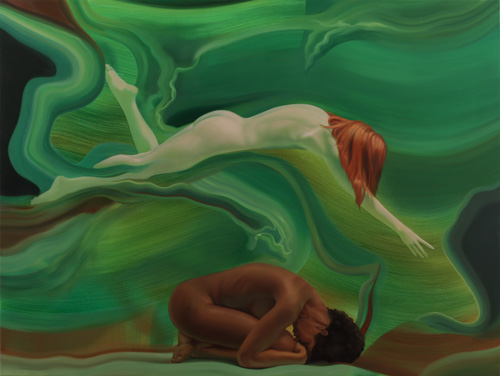
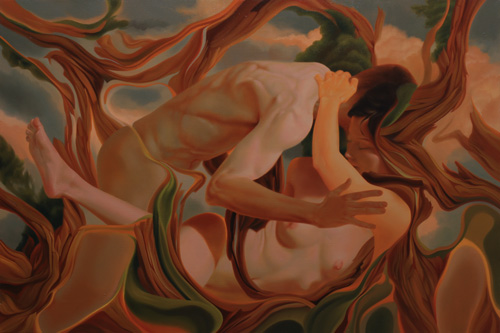
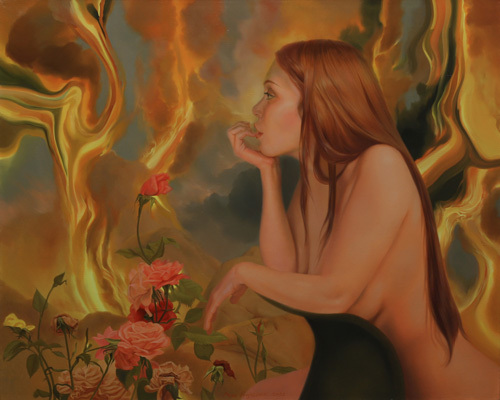
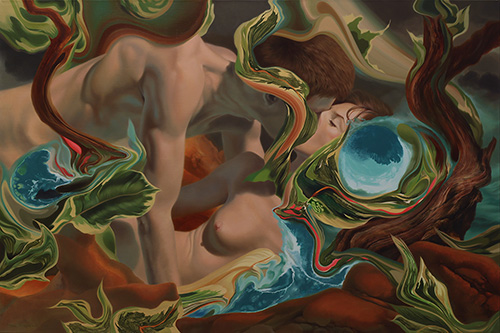
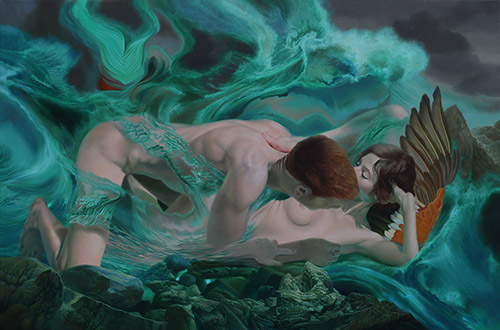
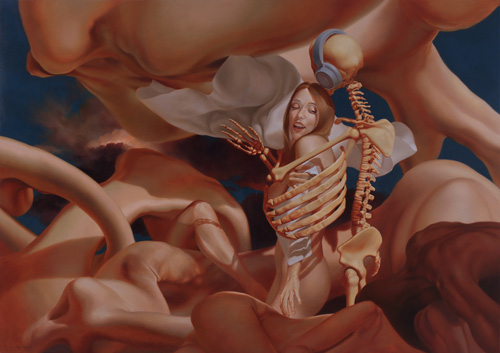
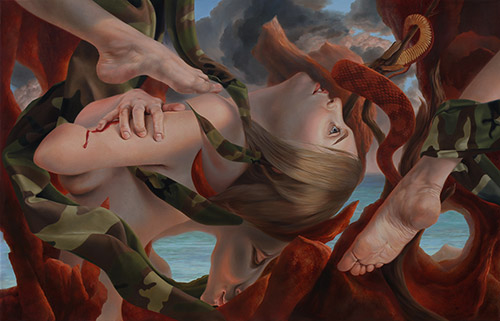
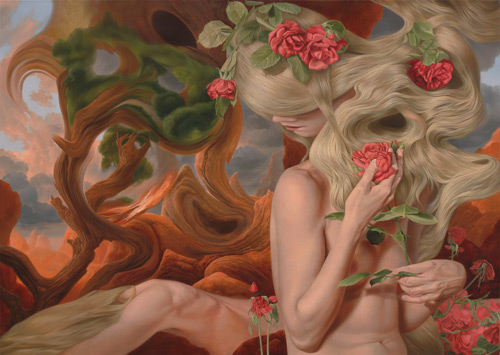
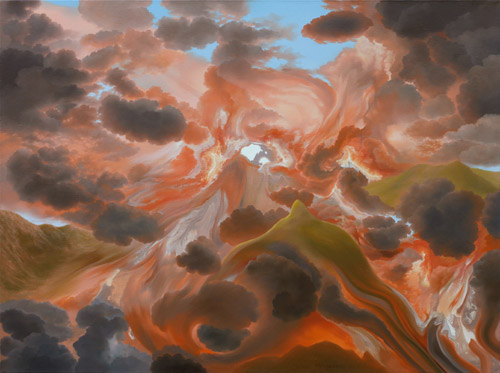
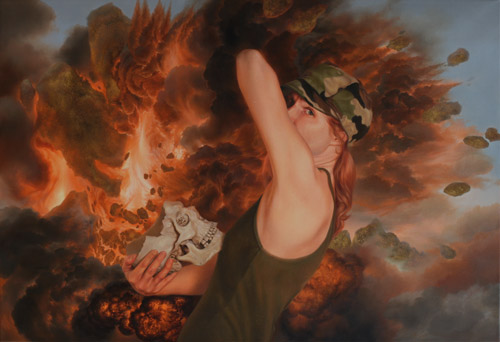
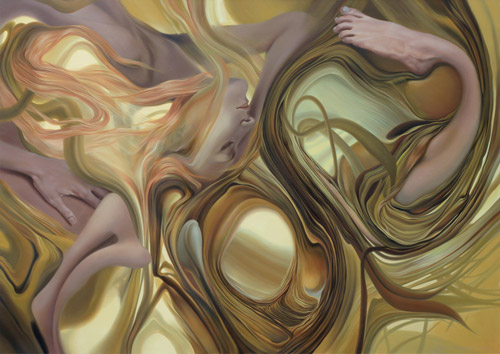
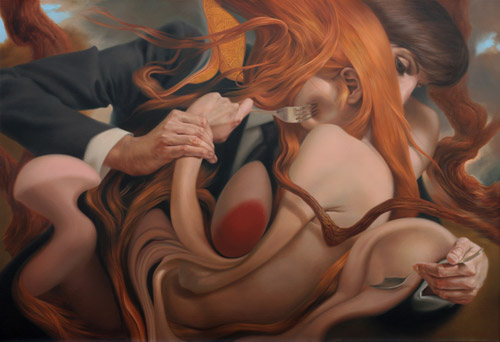
(private collection)
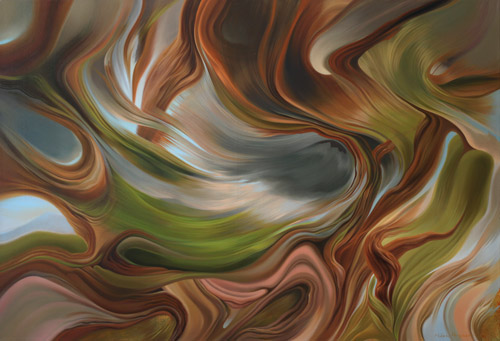
The Postcards from the Mediterranean
Milan Hrnjazović
Even at first look, the paintings from the exhibition “The Postcards from the Mediterranean” painted by Milan Hrnjazović leave the specific impression and awaken mixed feelings within us. Consciously striving for this type of reaction from observers, the author uses characteristic, distinctive manner in building his work, by taking an idyllic or a prosaic scene from everyday life as a starting point, like a couple in amorous passion or a garden of flowers, which through the painting processes he gradually dissolves and reshapes into a completely new world - the undefined, chaotic network of symbols, images and appearances. From the first motives comes the sea of scattered fluid elements that create new forms that constantly flow into one another and generate infinite chaos of elements, symbols and images by endlessly multiplying themselves.
The ideological foundation of the Hrnjazović’s art is made from the personal reflections about social strives, conflicts and problems within the modern society, where the author transfers his reflections about these topics to the canvas. Thinking and painting simultaneously, he constructs the product by creating undefined, grim forms which characteristically depict the hypocrisy and defeat of the relationship between human beings. The very title of the exhibition itself is indicative; there all the author’s ideas are symbolically sublimated in one place. Behind the idyllic title, the construct that is created by the author’s original method and which he took from his own artistic practice, is hidden. By creating a special illusion, Hrnjazović starts from a beautiful motif - a picturesque sound of the romantic Mediterranean, beneath which he builds the complete parallel universe, as an opposite side of the same motif, its darker and less appealing side that we see when we “look beneath the surface”, as the author himself asks us to do when we look at his paintings. The Mediterranean seen through the prism of the author’s thoughts is far from the one we are used to and becomes even more divided by extremes. On the opposite sides, there are the lucky ones that enjoy their bliss and the others who desperately look for a way towards normal life. Some bathe themselves in all the benefits of capitalism, and the others anxiously try to escape from their third-world homelands, looking for a better reality.
The author contemplates through his paintings, transferring the methodology of his contemplations on the canvas, using his art and thought processes to dissolve social taboos and conventional way of thinking about the present. Certain irregular, spontaneous directions and unexpected ways characteristic of a thought process are clearly visible in his painting process, which makes an extra layering of his art. Painted like this, we can see the paintings as parts of a moment, frames of reality, which carry sublimated messages. Frozen in a moment, these once hard and obscure images are introduced into idyll and the laziness of everyday life as a warning.
The important uniqueness of Hrnjazović’s exhibited art is the phenomenon of the high autonomy of his paintings. Following the spirit of the ideas given in the text “What do pictures want?” by W. J. T. Mitchell, we can notice that after the birth impulse, when the author breathes life into his paintings, those paintings continue to live on independently, separately from their creator. The painting becomes the personality of its own, exposed to different interpretations and perceptions, a “personality” with its own social and psychological power. By painting the specific “networks” of symbols and images, the author, after creating it, liberates his work in a way, accepting to lose control, in certain ways, over it, after which it continues to live on independently like a living being, communicating with every observer on its own, always telling different tales.
Milan Šušak
